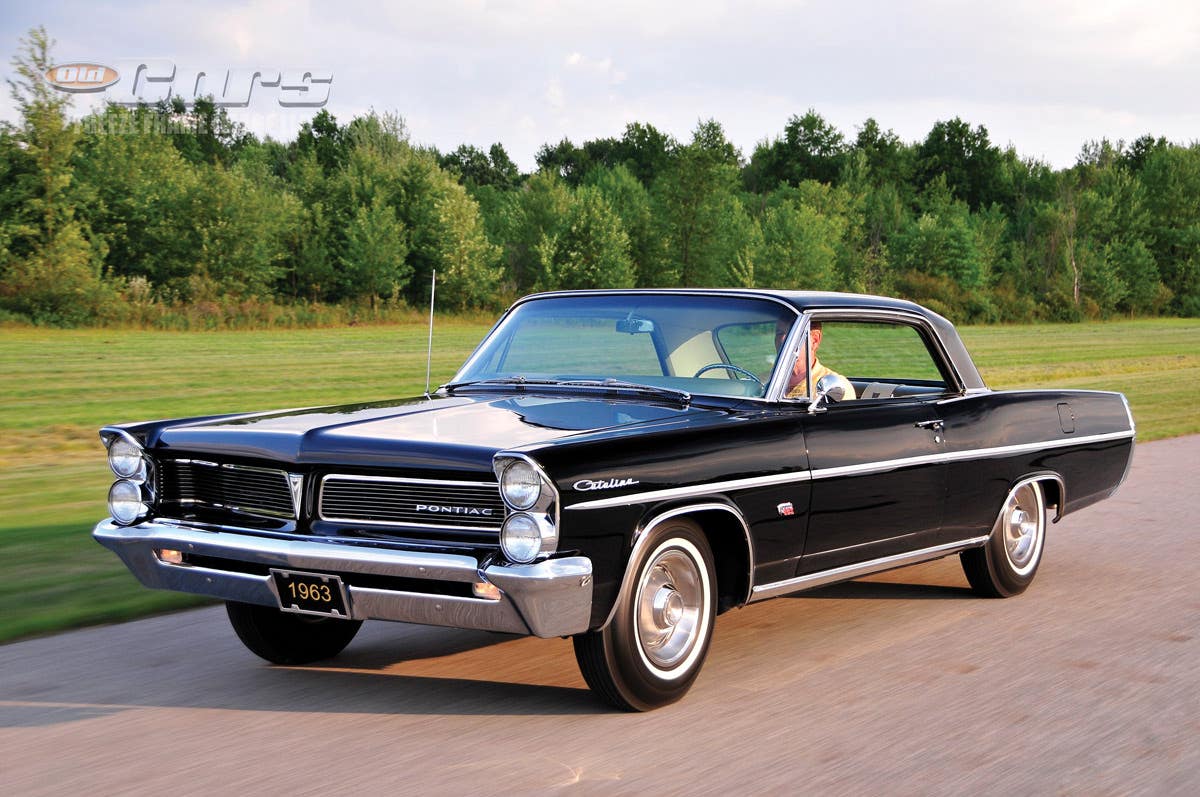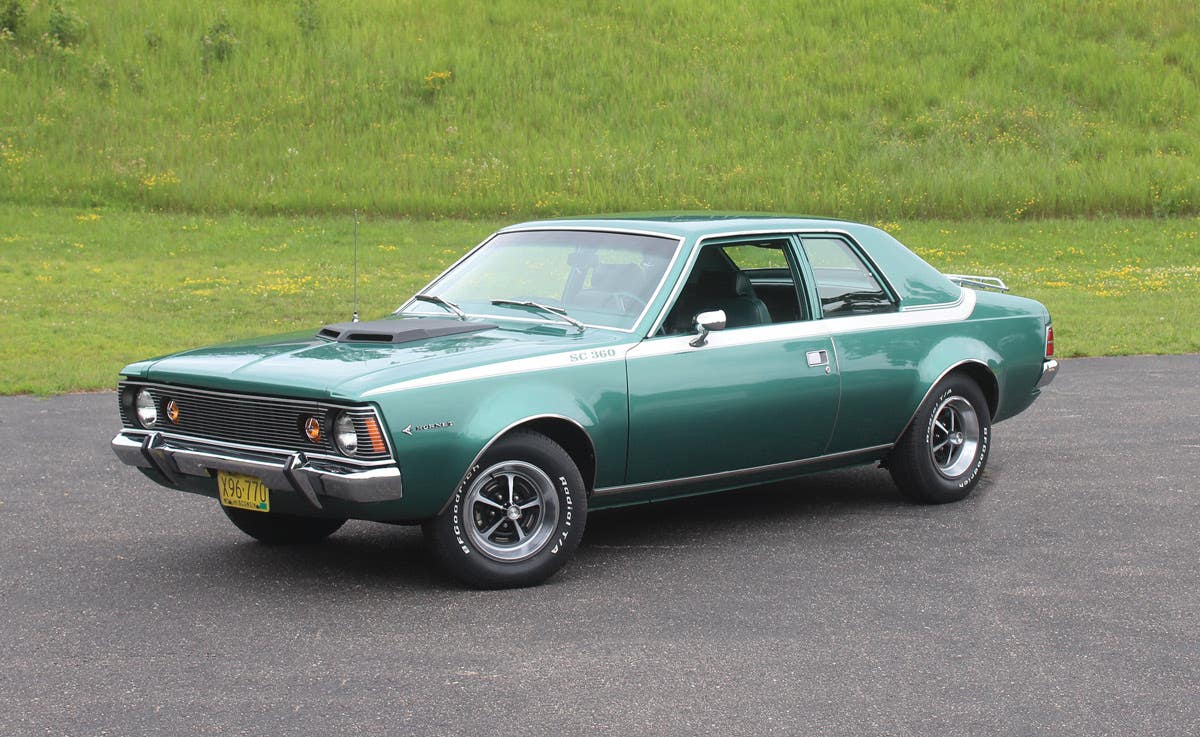Car of the Week: 1967 Iso Grifo
Marty Schorr probably raised more than few eyebrows among his many car buddies when he went far off the beaten path and drove home one day in an Iso Grifo back in 1968. For an all-American performance car kind of guy like Schorr, who at the time was editor of “Hi-Performance CARS” magazine, it was quite the roll of the dice. But Schorr, a lifelong car guy, is still the owner of that rare and unusual 1967 Italian-built, Chevrolet-powered sports car.
By Brian Earnest
About 40 years ago, Marty Schorr had some money that was just burning a hole in his pocket. And he was bound and determined to buy himself a nice car with it, preferably a flavor that he didn’t see on the streets of New York every day.
He probably raised more than few eyebrows among his many car buddies when he went far off the beaten path and drove home one day in an Iso Grifo. For an all-American performance car kind of guy like Schorr, who was editor of "Hi-Performance CARS" magazine at the time, it was quite the roll of the dice.
The purchase turned out to be a good one, however, because Schorr is still the owner of that rare and unusual 1967 Italian-built, Chevrolet-powered sports car. Actually, calling the car rare and unusual would be a big understatement. After Schorr used his connections with the famed Baldwin Chevrolet dealership and Motion Performance Group on Long Island, he got his car turned into a 1-of-1 Baldwin-Motion Grifo.
It’s the only one of its kind — then or now — and it’s this week’s oldcarreport.com “Car of the Week.”
“At the time, I wanted one of two cars: a Ferrari 275 GTB4, or a Mercedes 300 SL Gullwing,” Schorr recalls. “I had a birthday coming up and I had decided to give myself a really nice present. I had actually accumulated about $10,000 and I wanted to buy a nice car, and at the time, you could buy about 2 1/2 new Corvettes for that!”
Corvettes were too common for Schorr’s tastes at the time, but he had reservations about buying a Ferrari or Mercedes, too. “The problem was my background was all American [car] and all the speed shops that I dealt were all American … None of them know how to service a Gullwing or a Ferrari, which would have meant I would have had to go to a dealer, and there weren’t many around.”
Ironically, Schorr would go on to launch “VETTE” magazine in 1975 after working for various automotive publications, and also serving as a well-known marketing honcho for Baldwin-Motion. When it came time to pull the trigger on a new performance car in 1969, however, fate steered him away from the Corvettes.
“I worked for an automotive magazine [CARS] and I was contacted to do a story on an Iso Grifo with a big block in it,” Schorr said. “So I went out to this guy’s house, and he had a silver Grifo. It wasn’t a real 427 car. It had been converted in New York … But anyway, he gave me the keys to the car, and told me to ‘Take it for a drive, photograph it, do whatever you want.’
“I just couldn’t believe how fast the car was, how it handled, how it braked. It did everything right, and it had this incredible quality. It was just an amazing car.”
The Grifo Schorr drove and wrote about had a 427-cubic inch, 435-horsepower swapped in for the 327 that was standard. The owner had brought the car into Motion Peformance for service and dyno-tuning, and it was an impressive beast, with a silver paint job and custom aluminum hood modified to make room for the tri-power 427.
Immediately, Schorr began thinking a Grifo might be the perfect birthday present to give himself. And as luck would have it, there was a car waiting for a new owner not far away.
“The guy said, ‘Well, I know there’s a small block one for sale at a dealership. Turns out there was a Grifo at Konner Chevrolet in Paramus, New Jersey. It was for sale. The Grifo had been built for Mrs. Konner, the dealer’s wife, but she was unhappy with it because it didn’t have air-conditioning, a radio and was a four-speed. She didn’t want it, but they left it in the service area hoping she’d come to like it.
Schorr's car is parked fourth from right in front of the Motion
Performance shop. At the far right is the big-block Grifo that
inspired Schorr to buy his own Iso Grifo.
“It was a brand new car. It had break-in miles on it, had dealer plates and original MSO. The Bertone block-off plate on the dashboard where the radio goes was never even taken off.”
Schorr decided to make an offer on the maroon sports car, but his initial negotiations didn’t go well.
“The sticker price of those cars was over $14,000, and the dealer invoice price was about $10,000,” Schorr said with a chuckle. “Well, I knew the market was not good on these cars at the time, so I offered $5,000 in cash, and he proceeded to throw me out of the building!
“I came back the next day and offered $7,500, which he accepted, but then I had to tell him I didn’t want to buy it from him. I wanted Konner to transfer it to Baldwin Chevrolet so I could put it through as a Baldwin-Motion car."
Schorr managed to pull off the dealer swap and got to buy his Grifo from Baldwin. It was delivered to Motion Performance and treated to a host of performance upgrades, including dyno-tuning by Joel Rosen, new Holley 650-cfm four-barrel carburetor and Edelbrock aluminum intake.
A new LT1 crate engine replaced the factory 327.
Schorr drove the car for about 3,000 miles with the 327/340 Corvette engine still in it, but was never a fan of the marriage between the car’s engine and rear gearing. The factory solid-lifter 327 delivered about 340 horses, so power wasn’t the problem, it was more an issue of how the car was geared that gave him grief.
“The Grifo was really a car that had the wrong combination ( close-ratio Muncie T-10 four-speed and limited-slip 3.07 rear) for driving in the United States,” he said. “It had a great setup for driving in Europe at the time … The car would have been perfect for driving on the Autostrada or Autobahn. I actually used my car to drive to work in Manhatten a couple of days a week, and it was awful. I was shifting so much … but the car was so nice, that I didn’t complain.”
Then things really got interesting for the Grifo, again, thanks to Schorr’s industry connections. Over drinks one night, Schorr, Motion Performance supercar builder Joel Rosen and Zora Arkus-Duntov — the Godfather of the Corvette — were discussing the new 1970 LT1 engine that Chevrolet was ready to introduce in the Corvette. Schorr related the issues he was having with the drivability of his Grifo, and “before I knew it, there was a crate at Motion for me from Zora with a new LT1 in it!”
The new Corvette small-block motor went straight into Grifo, along with a new milder hydraulic lifter camshaft and carryover Edelbrock manifold and small Holley quad. All original Iso engine dressing was retained. At that point, Schorr finally had the unique, hi-po head turner that he had been imagining.
The underhood tag identifies the Grifo as a Motion Peformance car.
“It’s the perfect power train because I have lot of low end, and I could cruise at any legal to over 100 mph speeds I wanted all day,” he said. “It has huge four-wheel disc brakes. It is a very beautiful, fast and safe GT car … And the LT1 is a great, great engine. It has the forged steel crankshaft and rods, forged aluminum pistons and big port heads … It is really a great bullet-proof engine. Nowadays it’s difficult to feed it because it has an 11-to-1 compression ratio. I use 100 octane unleaded that you can get at the pumps in Florida. I’d like to use 105 or 110 leaded, but you have to pump that into a can.”
Schorr’s car is unique on many fronts, including the obvious: It is the only Baldwin-Motion Grifo ever built. Even if had never gotten the Motion treatment, however, the car would still be noteworthy.
Only 412 of the slippery Italian coupes were produced worldwide between 1965 and 1974. “I’m the only person in the country who has had one from new,” Schorr said. “And it’s the only Baldwin-Motion [Grifo].”
The two-passenger steel-bodied (aluminum hood) fastbacks had some visual similarities between both the Ferraris and Corvettes of the time, with a low profile, lots of glass and refined, leather interiors. The Grifos were swift, and handled and braked with the best cars on the road.
Schorr’s car is No. 046 — one of the first 50 Grifos built, meaning it was coachbuilt using Berone-produced body panels. “It was essentially a hand-built car. You can take my car apart and tell it’s handbuilt ,” Schorr said. After the initial 50 cars were shipped, production switched over to a more typical assembly-line format at the Rivolta factory in Milano, Italy.
After getting the Motion treatment on his Grifo, Schorr had only one complaint remaining – the paint job. He wasn’t satisfied that the paint didn’t match the quality of of the rest of the car, so he had well-known funny car painter “Buffalo Bob” Gerdes at Circus Automotive in New Jersey spray the car a maroon pearl and candy with subtle gold flake underneath.
“He painted the car in 1972 and it’s the same paint that’s on the car now,” Schorr said. “When the sun hits it just right, you see all this gold flake, but it’s very fine.”
The problem with the paint job, now, according to Schorr, is that it is next to impossible to touch up. He’s managed to have some minor paint repair done to the car after he dinged the back end in his garage a while back, but Schorr tries to baby the paint as much as he can.
“I’m a little gun shy of leaving it in parking lots and stuff,” he said. “It really can’t be touched up. The whole thing would have to be repainted, and that would be very expensive on a car like this.”
Not to say that Schorr treats his car like a trailer queen. He drives it around his adopted hometown of Sarasota, Fl. During the winter months, and he makes occasional appearances at shows, where it wins its share of awards as an unrestored original.
“I take it out locally, but it doesn’t have air-conditioning, so summer in Florida is not real conducive [to driving it],” he said. “I’ll drive it a little bit, show it at a couple of shows … I manage a car guy lunch group [Sarasota Café Racers], and I’ll take it to a couple lunches. I get a lot of pleasure out of short drives with it.
“I just have a certain mentality — I tend not to sell things. I just like to hang onto stuff, and with this car, it’s become part of my family. And the fact that you don’t see one — it’s just an unusual car, and I think it’s one of the most beautiful cars, even today.
“It’s 42 years old, and it’s still a stunning car.”
MORE RESOURCES FOR CAR COLLECTORS FROM OLDCARSWEEKLY.COM







